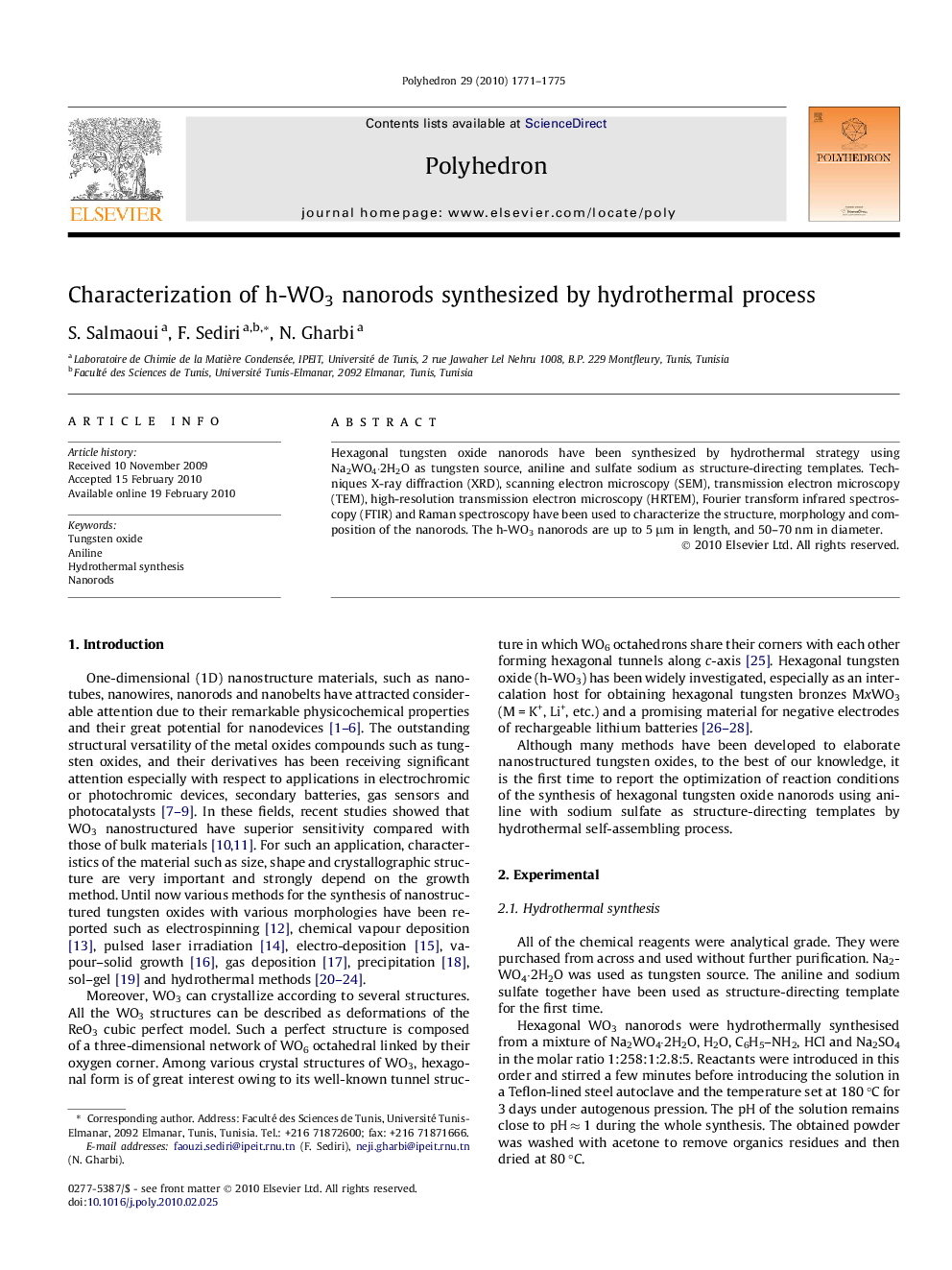| Article ID | Journal | Published Year | Pages | File Type |
|---|---|---|---|---|
| 1339177 | Polyhedron | 2010 | 5 Pages |
Hexagonal tungsten oxide nanorods have been synthesized by hydrothermal strategy using Na2WO4·2H2O as tungsten source, aniline and sulfate sodium as structure-directing templates. Techniques X-ray diffraction (XRD), scanning electron microscopy (SEM), transmission electron microscopy (TEM), high-resolution transmission electron microscopy (HRTEM), Fourier transform infrared spectroscopy (FTIR) and Raman spectroscopy have been used to characterize the structure, morphology and composition of the nanorods. The h-WO3 nanorods are up to 5 μm in length, and 50–70 nm in diameter.
Graphical abstractHexagonal tungsten oxide nanorods have been synthesized by hydrothermal strategy using Na2WO4·2H2O as tungsten source, aniline and sulfate sodium as structure-directing templates. Techniques X-ray diffraction (XRD), scanning electron microscopy (SEM), transmission electron microscopy (TEM), high-resolution transmission electron microscopy (HRTEM), Fourier transform infrared spectroscopy (FTIR) and Raman spectroscopy have been used to characterize the structure, morphology and composition of the nanorods. The h-WO3 nanorods are up to 5 μm in length, and 50–70 nm in diameter.Figure optionsDownload full-size imageDownload as PowerPoint slide
